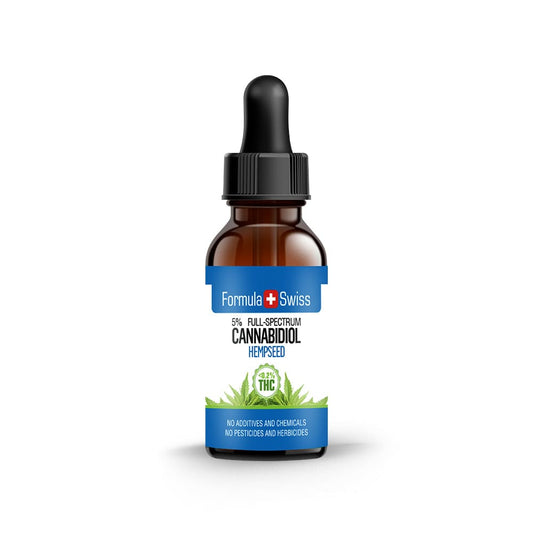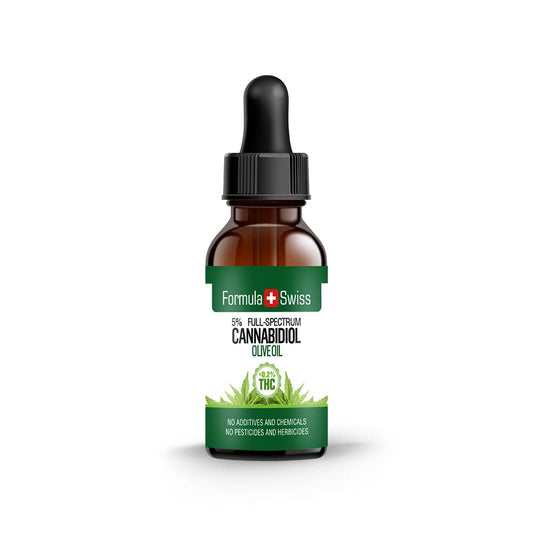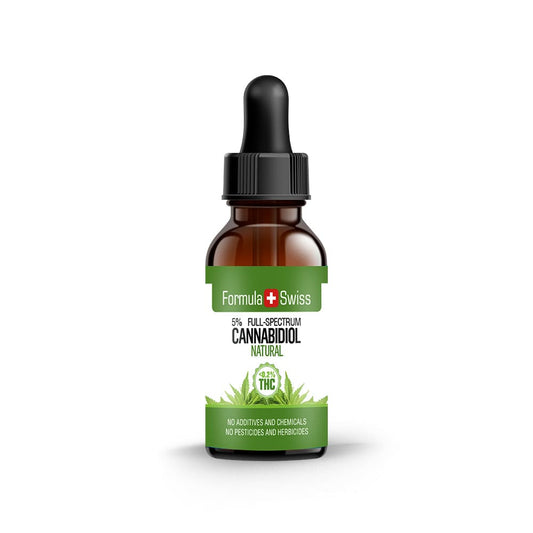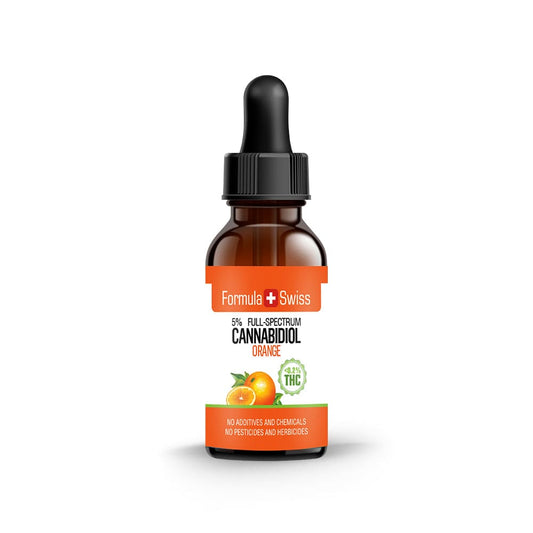Sustainability isn’t just a buzzword anymore—it’s something we genuinely need to take seriously. And hemp is starting to play a real role in that shift. Even though it’s been around for thousands of years, it’s getting fresh attention from industries looking for greener, more responsible alternatives.
I’ve watched hemp go from being a fringe crop to something that’s firmly on the radar. What used to be seen as a niche idea is now a serious option for companies trying to reduce their environmental impact.
Today, hemp shows up in everything from textiles and paper to eco-friendly construction and skincare. Its strong fibres and nutrient-rich seeds make it incredibly adaptable. As the demand for sustainable materials grows, hemp keeps proving just how valuable it can be.
Save up to 30% when you order your CBD oil today
Key takeaways
- Hemp’s adaptability makes it a valuable option in sustainable production.
- It is commonly used in sectors such as textiles, construction, and packaging.
- Hemp-based alternatives are being integrated into daily life as replacements for synthetic materials.
- Eco-conscious usage patterns are increasing demand for hemp-based goods.
- Hemp provides scalable, renewable solutions for greener supply chains.
This article is provided for informational purposes only and does not relate to any of the products available in our webshop. For more information, please see our full disclaimer.
The evolution and history of hemp use
The history of hemp is long and diverse. Originating in Central Asia over 10,000 years ago, it has been an important material for agriculture and manufacturing throughout history.
Hemp fibres were used in ancient times for ropes and sailcloth, contributing to maritime exploration. Despite restrictions in the 20th century, it has re-emerged due to its environmentally supportive characteristics and historical value.

Today, hemp is associated with innovation and sustainability. It bridges the past and present, showing how traditional crops can support modern ecological objectives.
| Period | Usage |
|---|---|
| Ancient times | Fibres for textiles and ropes |
| 18th century | Sailcloth and naval supplies |
| Early 20th century | Restricted due to regulatory changes |
| 21st century | Used in eco-conscious applications |
Hemp's history demonstrates its resilience and relevance. As industries shift toward renewable inputs, hemp continues to be a compelling option.
The most common uses of hemp products
Hemp products are now widely incorporated into everyday routines. They showcase the crop’s utility and sustainable advantages across diverse sectors.
- In fashion, hemp is used to create strong, breathable fabrics. It’s popular in both everyday and luxury clothing for its durability and renewable sourcing.
- Hemp seeds are used to produce ingredients that offer natural protein, fatty acids, and minerals, often included in plant-based formulations.
- In construction, hempcrete is gaining traction as an insulation material with a low environmental footprint.
Hemp is also contributing to packaging innovation. Biodegradable plastics made from hemp help address waste management and plastic pollution challenges.
| Area of use | Examples | Benefits |
|---|---|---|
| Fashion and textiles | Eco-friendly garments, shoes | Durable, renewable resource |
| Plant-based applications | Hemp seeds, oils | Source of plant-derived protein and nutrients |
| Construction | Hempcrete, insulation panels | Low environmental impact, strong insulation |
| Packaging | Biodegradable plastics | Decomposes naturally, reduces waste |
Hemp in textiles and fashion
The use of hemp textiles in fashion signals a shift toward sustainable materials. Hemp fabric is regarded as environmentally responsible and provides advantages over many traditional textiles.

Eco-friendly clothing alternatives
Hemp is cultivated with relatively low water requirements and minimal need for synthetic inputs. This makes it a beneficial option in sustainable fashion. Its growth supports improved agricultural practices and can contribute positively to soil structure.
For producers, hemp serves as a valuable crop for rotation and resource efficiency. The fibre yields long-lasting material suitable for daily wear and modern fashion designs.
Durability and longevity of hemp fibre
Hemp fibre is strong and durable. Garments made from it are known to withstand repeated use and washing while maintaining their shape and integrity. This makes hemp fabric suitable for long-term wear and helps reduce textile waste.
Its resilience supports the creation of long-lasting clothing, helping reduce the frequency of replacement and contributing to more sustainable wardrobe practices.
Revival of hemp fabrics in modern apparel
Hemp has regained popularity in modern fashion collections. Designers increasingly choose hemp for its low environmental impact, versatility, and appealing texture. It’s used across diverse styles—from everyday basics to high-end fashion.
As demand grows for responsibly sourced materials, hemp fabric provides both sustainability and durability, making it a well-regarded alternative to synthetic options.
Order and enjoy up to 30% off your CBD oil purchase
Industrial hemp: Building and construction materials
The transition to sustainable construction has brought industrial hemp to the forefront of green building practices. Hemp materials are being adopted for their low environmental impact and versatile structural properties.

Hempcrete, a mixture of hemp hurd and lime, is gaining attention for its breathability, insulation performance, and resistance to pests and mould. It is a lightweight material well-suited for eco-conscious construction.
- Thermal insulation properties help reduce energy usage
- Carbon-sequestering characteristics support sustainable building goals
- Structural flexibility and breathability enhance long-term durability
Advancements in manufacturing have improved the performance of hemp-based materials. They are now found in insulation panels, blocks, and other building components.
Hemp is contributing to a more sustainable construction sector by offering an alternative to traditional, resource-intensive materials.
Beauty and personal care hemp-based products
Hemp-derived ingredients are increasingly being used in beauty and personal care products, noted for their moisturising characteristics and compatibility with sensitive skin. This section explores how hemp-based items support the demand for plant-based cosmetics and contribute to market growth.

The preference for natural skincare and environmentally responsible choices continues to grow. Hemp-based personal care products are part of this shift, valued for their naturally occurring essential fatty acids and vitamin content.
- Sales of hemp-infused beauty and personal care products have seen steady year-on-year growth.
- Hemp's share within the beauty sector reflects the shift towards plant-based and low-impact formulations.
Many buyers are seeking alternatives that align with their ethical and environmental values. Hemp ingredients provide options for products that are seen as both practical and aligned with responsible sourcing.
| Product type | Preference level | Percentage (%) |
|---|---|---|
| Hemp skincare products | High | 65 |
| Hemp hair care products | Moderate | 35 |
The preference for hemp skincare products highlights continued interest in natural formulations. Hemp's growing role in the beauty sector is expected to expand alongside the broader trend toward cleaner, ingredient-conscious products.
Order CBD oil now and save as much as 30%
Hemp products for a sustainable lifestyle
Living sustainably is a growing priority, and hemp-based alternatives offer practical solutions. Hemp supports multiple areas of eco-conscious living—from biodegradable plastics to long-lasting household items—while helping reduce environmental impact.

Eco-friendly household items and utensils
Hemp can be used to create durable kitchen and cleaning tools. These products are long-lasting and often biodegradable, offering a more sustainable alternative to synthetic items commonly used in the home.
Biodegradable plastics from hemp
Hemp-based biodegradable plastics provide an alternative to traditional petroleum-based plastics. These materials break down more quickly and safely in the environment, supporting waste reduction goals and circular production models.
Hemp paper products and their environmental benefits
Paper made from hemp is durable and typically requires fewer chemical treatments than wood pulp. This supports a cleaner production process and helps reduce the reliance on forest resources.
| Product type | Benefits | Environmental impact |
|---|---|---|
| Hemp fabrics | Durable, uses less water | Low |
| Biodegradable plastics | Break down naturally, non-toxic | Very Low |
| Hemp paper | Low chemical input, strong fibres | Reduced |
Hemp-based goods offer tangible ways to reduce environmental impact in daily life. Their role in promoting sustainable habits is becoming more visible across homes and industries.
Hemp in the automotive industry
The automotive sector is turning to more sustainable components, and hemp is a leading candidate. Its strength, light weight, and renewability make it suitable for parts that improve vehicle efficiency and reduce reliance on synthetic materials.
Hemp composites are already being used in car interiors—such as door panels and dashboards—because of their durability and lower weight, which contributes to better fuel economy.
| Application | Benefits |
|---|---|
| Door panels and dashboards | Lightweight, strong, reduces vehicle mass |
| Fuel efficiency | Improved through lower component weight |
| Environmental benefit | Renewable, reduces use of synthetic inputs |
Using hemp in cars is not just about being green. It's about setting new standards in car making. The car industry is choosing hemp to demonstrate a commitment to sustainability and innovation.
The versatility of hemp uses in everyday life
Hemp is a remarkably adaptable material with applications across many aspects of daily life. Its environmentally conscious qualities have inspired a range of innovative uses. In the construction sector, for instance, hemp-based insulation in France is expected to make up 13% of the market by 2030.

Across multiple sectors, hemp is gaining recognition for its practical value. In building and construction, where reducing environmental impact is a growing priority, hemp-based materials present an alternative approach aligned with sustainability goals.
Hemp seeds are increasingly featured in a wide variety of plant-based products. Known for their natural composition—including protein, omega-3 and omega-6 fatty acids, and other nutrients—they are often used in the context of environmentally focused lifestyles.
In the textile industry, hemp fibres are used to make durable and breathable fabrics. From everyday basics to outerwear, hemp textiles support more thoughtful choices in clothing design and material sourcing.
Hemp’s potential aligns well with broader sustainability strategies. In France and other countries, it is being explored as part of national efforts to lower carbon footprints, particularly in climate-conscious architecture and building innovation.
These developments illustrate hemp’s expanding role in the shift toward materials and products designed with environmental responsibility in mind.
Personal perspective
In my work, I’ve seen a lot of so-called “green solutions” come and go. But hemp isn’t one of them. Its practicality speaks for itself. It’s an old material, used for centuries, and yet it keeps finding new relevance today. The fact that it can be applied across everything from construction to clothing isn’t just impressive—it’s necessary if we’re serious about sustainability.
Over the past decade, I’ve watched hemp shift from a marginal crop to a serious player in textiles, construction, packaging and more. That change hasn’t been driven by hype, but by clear environmental and practical benefits.
What keeps surprising me is how adaptable the plant continues to be. Whether it’s hempcrete in buildings, fibres in textiles, or biodegradable plastics in packaging, the list keeps growing. And while not everything labelled “eco” lives up to the promise, hemp consistently holds up under scrutiny. That’s why I still see it as one of the most credible materials in the push toward more responsible production.
Don’t miss out—save up to 30% when you purchase CBD oil today
Frequently asked questions
What are the most common uses of hemp products?
Hemp is used in textiles, biodegradable plastics, construction, skincare, paper, and a variety of plant-based food products.
What role does hemp play in textiles?
Hemp fibres are used to produce strong, breathable fabrics for clothing, bags, and industrial materials, appreciated for their durability.
Is hemp used in construction?
Yes, hemp is used in materials such as hempcrete, which provides insulation and structural support while maintaining a low environmental footprint.
How does hemp contribute to biodegradable plastics?
Hemp can be processed into plastic alternatives that degrade more quickly and naturally, offering a more sustainable substitute for petroleum-based products.
What are the environmental benefits of using hemp products?
Hemp typically requires less water and fewer chemical inputs than many other crops, making it suitable for sustainable agriculture and manufacturing.
Are there any skincare products made from hemp?
Yes, hemp oil is used in skincare due to its moisturising and barrier-supportive properties, and is found in creams, lotions, and soaps.
Can hemp be used in the production of paper?
Yes, hemp fibres can be processed into paper with a lower need for chemicals and a shorter cultivation cycle compared to wood pulp.






